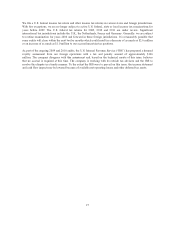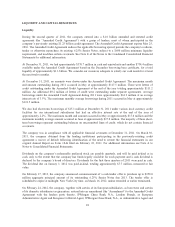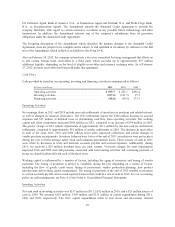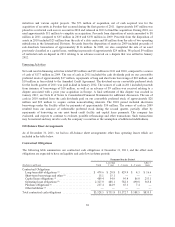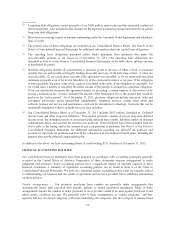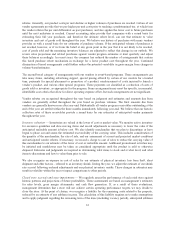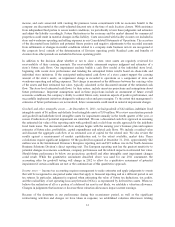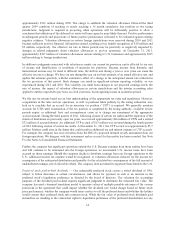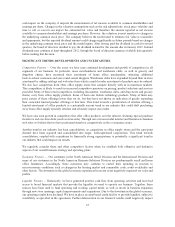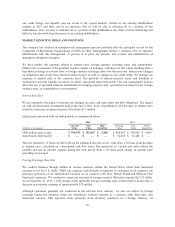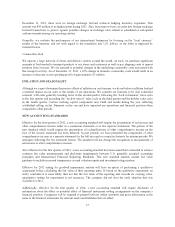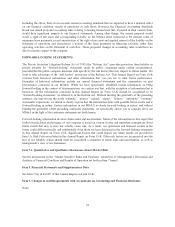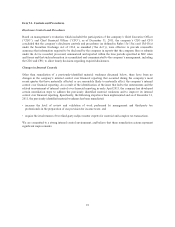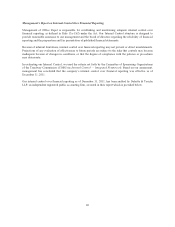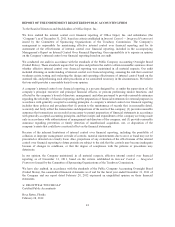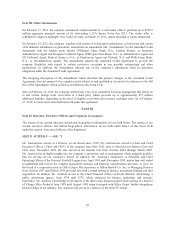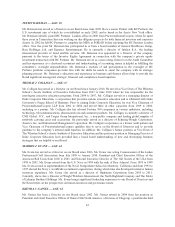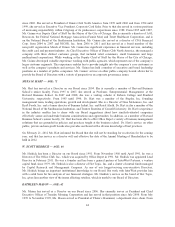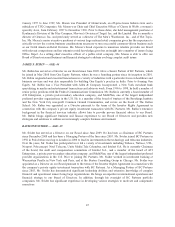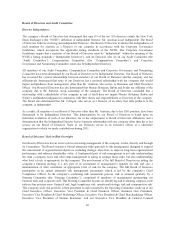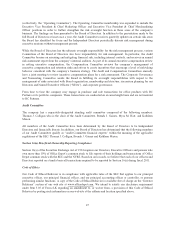Office Depot 2011 Annual Report Download - page 39
Download and view the complete annual report
Please find page 39 of the 2011 Office Depot annual report below. You can navigate through the pages in the report by either clicking on the pages listed below, or by using the keyword search tool below to find specific information within the annual report.December 31, 2011, there were no foreign exchange forward contracts hedging inventory exposures. This
amount was $43 million at its highest point during 2011. Also, from time-to-time, we enter into foreign exchange
forward transactions to protect against possible changes in exchange rates related to scheduled or anticipated
cash movements among our operating entities.
Generally, we evaluate the performance of our international businesses by focusing on the “local currency”
results of the business, and not with regard to the translation into U.S. dollars, as the latter is impacted by
external factors.
Commodities Risk
We operate a large network of stores and delivery centers around the world. As such, we purchase significant
amounts of fuel needed to transport products to our stores and customers as well as pay shipping costs to import
products from overseas. We are exposed to potential changes in the underlying commodity costs associated with
this transport activity. As of December 31, 2011, a 10% change in domestic commodity costs would result in an
increase or decrease in our operating profit of approximately $5 million.
INFLATION AND SEASONALITY
Although we cannot determine the precise effects of inflation on our business, we do not believe inflation has had
a material impact on our sales or the results of our operations. We consider our business to be only somewhat
seasonal, with sales generally trending lower in the second quarter, following the “back-to-business” sales cycle
in the first quarter and preceding the “back-to-school” sales cycle in the third quarter and the holiday sales cycle
in the fourth quarter. Certain working capital components may build and recede during the year reflecting
established selling cycles. Business cycles can and have impacted our operations and financial position when
compared to other periods.
NEW ACCOUNTING STANDARDS
Effective for the first quarter of 2012, a new accounting standard will require the presentation of net income and
other comprehensive income either as a continuous statement or as two separate statements. The portion of the
new standard which would require the presentation of reclassifications of other comprehensive income on the
face of the income statement has been deferred. In past periods, we have presented the components of other
comprehensive income as a separate statement for the full year and as a separate footnote for interim periods. We
anticipate following the two statement format. The standard will not change the recognition or measurement of
net income or other comprehensive income.
Also effective for the first quarter of 2012, a new accounting standard has been issued that is intended to achieve
common fair value measurements and disclosure requirements between U.S. generally accepted accounting
principles and International Financial Reporting Standards. This new standard amends current fair value
guidance to include increased transparency around valuation inputs and investment categorization.
Effective for 2012 testing for goodwill impairment, entities will have an option of performing a qualitative
assessment before calculating the fair value of their reporting units. If, based on the qualitative assessment, an
entity concludes it is more likely than not that the fair value of the reporting unit exceeds its carrying value,
quantitative testing for impairment is not necessary. The company did not elect the early adoption that was
available for 2011.
Additionally, effective for the first quarter of 2014, a new accounting standard will require disclosure of
information about the effect or potential effect of financial instrument netting arrangements on the company’s
financial position. Companies will be required to present both net (offset amounts) and gross information in the
notes to the financial statements for relevant assets and liabilities that are offset.
37


